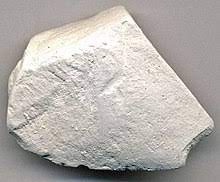What’s the difference between chalk and gypsum? You may have heard them both referred to as “chalk”, and that’s probably because they both have the word “chalk” in their names, but there’s more to the story than that. Chalk and gypsum are both types of plaster that are used as a dry, finishing layer on plaster walls. But, where chalk is made out of calcium carbonate and is used mostly for whitening and drawing, gypsum is made out of calcium sulfate and is used for a variety of purposes, from interior and exterior wall applications to gypsum board and drywall.
Gypsum is often used in conjunction with other building materials like cement, for example when creating mortar for cement plaster. There are many types of gypsum and each has its own unique uses. These are called “building blocks” in the plastering industry. However, some people also use “gypsum” as a blanket term that refers to all gypsum-based building materials like plaster, drywall, and gypsum board.
What’s the Difference Between Chalk and Gypsum?
Chalk is a naturally occurring mineral that’s used as a building material. It’s made of calcium carbonate and is a byproduct of limestone. Gypsum on the other hand is manufactured and is used as a plaster material. It is made of calcium sulfate and other chemicals. But, the main reason chalk and gypsum are often confused is because they both contain the word “chalk” in their names.
Gypsum is a drywall and plaster material, whereas chalk is a drawing material for artists. So, there are actually many uses for chalk, but most of them have to do with drawing and whitening. Gypsum is most commonly used to create a dry, plaster-like finish that adheres to the surface of your walls. It is often combined with sand, cement, and water to create a plaster that can be applied as a finish to a variety of surfaces.
How is Gypsum Made?
Gypsum is made by the process of “hydration”, which is heating calcium sulfate or hydrate until it becomes water. Gypsum is often created in factories or by mixing calcium sulfate with other materials. One of the most common ingredients is limestone, which is mined by hand, crushed, and heated until it meets the water requirement for gypsum. This process is called “calcination”.
After the calcium sulfate is hydrated, it is often mixed with sand, sodium chloride, and water to create a water-base plaster that can be applied to walls as drywall or interior finish. You can also use anhydrous calcium sulfate like gypsum in the creation of drywall. Drywall is created by mixing gypsum with other materials, including some that are typically used in the construction of gypsum board. The gypsum is applied to the wall as a drywall finish while the other materials are used as structural supports.
Is Gypsum the Same as Chalk?
Yes, in fact, they are both made of calcium sulfate, but they are not the same! Not only are they both made of calcium sulfate, but they are also largely manufactured using limestone. However, they are used in two entirely different ways.
Chalk is mainly used as a drawing medium, whereas gypsum is mainly used as a plaster material. Chalk is soft, elastic, and white in color, whereas gypsum is hard, brittle, and gray in color. You can see the difference between chalk and gypsum in the following image:
How is Chalk made and how is it used
Chalk is made from powdered mineral limestone. It can be mined, but most of it is produced from the breakdown of existing rocks. As it breaks down, it produces calcium carbonate or limestone. The calcium carbonate is then ground and mixed with different chemicals, including water, to create a paste that can be applied to a surface as a drawing medium or used as a “finishing” touch on plaster walls.
How Does Gypsum Work in Plaster Work?
In the manufacturing of gypsum, the limestone is mixed with other materials that are added to create the water-base plaster. These other materials include sodium chloride, salt, and sand. When these materials are combined with the calcium sulfate, they create a water-base plaster that contains calcium sulfate and sodium chloride. This mixture can then be mixed with water to create the plaster.
Gypsum vs. Cement Plaster
There is a lot of confusion between chalk and gypsum, but they are not the same thing. Chalk is a drawing material while gypsum is a plaster material. However, they are both made of calcium sulfate and can be used together to create a plaster finish as you would see in a gypsum board. They are not the same, but they can be used together to create the same finish!
Conclusion
Chalk and gypsum are both made of calcium sulfate, but they are not the same thing. Therefore, there is a lot of confusion between the two. In fact, there are many uses for chalk, but most of them have to do with drawing and whitening. Gypsum is mostly used as a plaster material, but it can be used as drywall or interior finish as well.
Some people may use “gypsum” as a blanket term that refers to all gypsum-based building materials like plaster, drywall, and gypsum board. The truth is that chalk is actually made of minerals, whereas gypsum is manufactured from limestone. They are both made of calcium sulfate and sodium chloride, but they are used in two entirely different ways.


